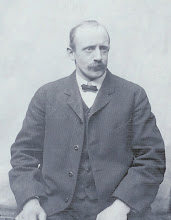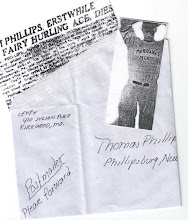Here's the text of an email from Bill Hickman, chairman of the Pictorial History Research Committee of the Society for American Baseball Research (SABR):
"Fred Worth has come up with a unique method for finding an image of a missing player. He took a photo of the tombstone of John E. Bass in a cemetery in Denver, Colo. It turns out that there's a pretty nice carving of Bass in a baseball uniform on his tombstone. Fred theorizes that the carver was probably working from an authentic photo of Bass. At any rate, I've accepted it as a valid image of Bass."
 A picture of the image on the tombstone appears on the website of Out of the Park Baseball with the note "Thanks to SABR for tracking this one down!"
A picture of the image on the tombstone appears on the website of Out of the Park Baseball with the note "Thanks to SABR for tracking this one down!"Shortstop, catcher and outfielder John Elias Bass was a major league player from 1871-1877. He played for the Cleveland Forest Citys, Brooklyn Atlantics and Hartford Dark Blues. According to one source I saw, in 1871 Bass led the National Association in triples, with 10.
He died on Sept. 24, 1888 in Denver, Colo. No other picture of him is known.
Bass is buried in Riverside Cemetery in Denver. But who would have thought there would be a picture of him on his headstone?
Fred Worth discussed his latest trip to visit ballplayers' graves at the SABR Day event this year in Arkadelphia, Ark.
The picture is a fantastic find but, as always, you can't convince everyone. My son David points out that there is no proof that the artist who carved the stone knew what Basss looked like. If he had, wouldn't he have included more facial features?
SABR say the primary focus of its Pictorial History Committee is to develop a Player Image Index. The goal of this project is to catalog at least one photo image of every man who has played in the major leagues. That means knowing where it has been published or in what collection it has been seen.
We now know were we can find John Elias Bass.




